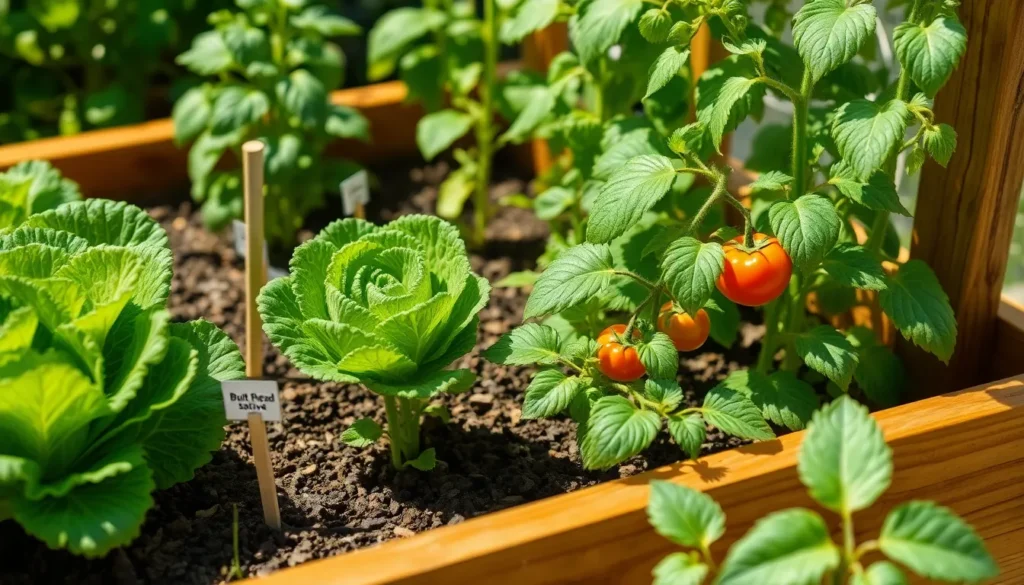Gardening is a delightful journey that invites you to cultivate not just plants but also patience and joy. Whether you’re dipping your toes into the soil for the first time or have been nurturing your green space for years, growing your own vegetables can be one of the most rewarding experiences. Imagine the satisfaction of harvesting fresh produce from your garden—it’s not only about the taste but also about the sense of accomplishment that comes with it. This article is dedicated to helping you discover the easiest vegetables to grow, perfect for beginners and a gentle reminder for seasoned gardeners that simplicity can yield the sweetest rewards.
For those new to the world of gardening, choosing the right vegetables is crucial to building confidence and ensuring success. We’ll guide you through a selection of hardy, resilient veggies that thrive with minimal fuss, offering a bountiful harvest even with the most modest of efforts. Experienced gardeners, too, might find joy in revisiting these tried-and-true favorites, perhaps exploring new varieties or growing methods. Together, we’ll explore tips and tricks to ensure your vegetable garden flourishes, regardless of your level of expertise.
Throughout this article, you’ll learn about vegetables that are not only easy to grow but also versatile in the kitchen, enhancing your culinary adventures. From understanding the best planting practices to discovering how to care for your crops with ease, we’ll cover everything you need to know to get started. Our goal is to empower you to cultivate a thriving vegetable garden that brings both nourishment and joy to your table. So, roll up your sleeves, grab your gardening gloves, and let’s dig into the wonderful world of easy-to-grow vegetables!
Choosing Beginner-Friendly Vegetables
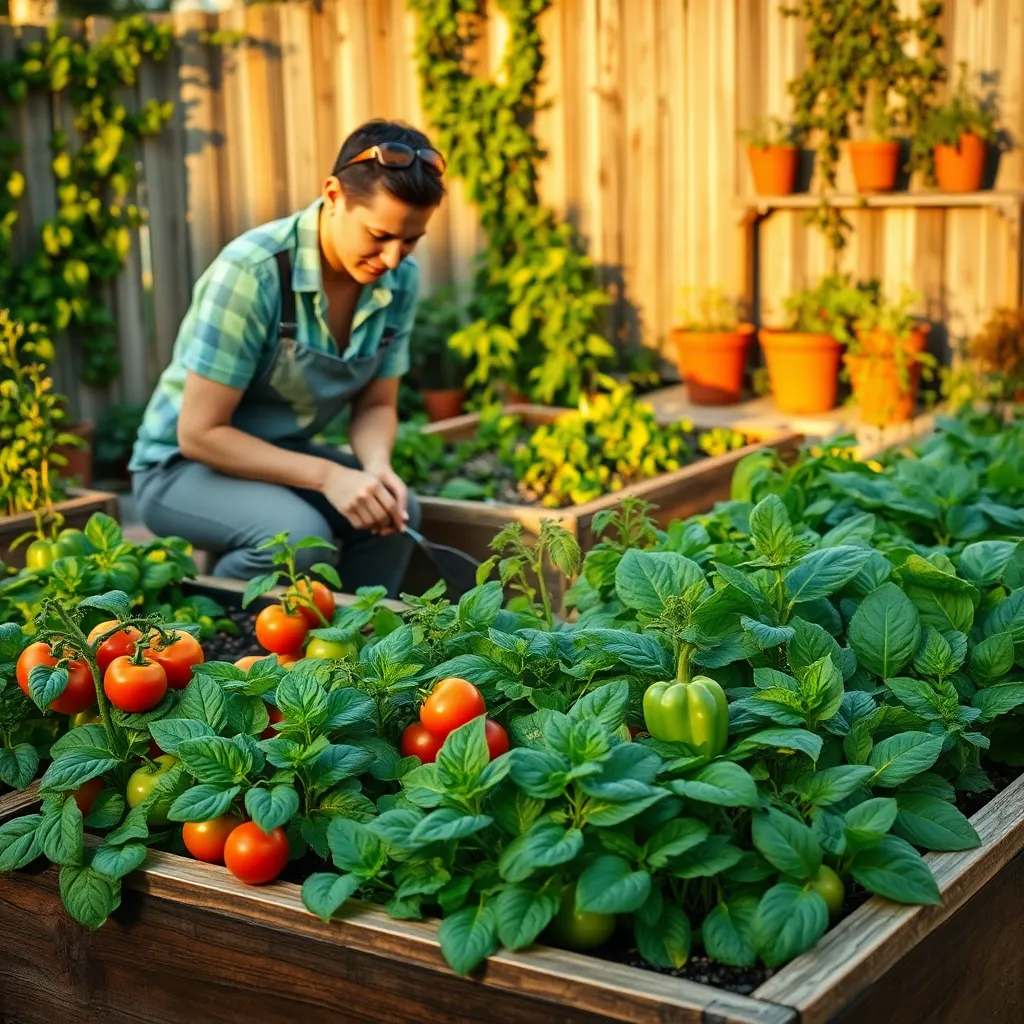
When starting a vegetable garden, choosing plants that are easy to grow can boost your confidence and ensure a successful harvest. Leafy greens like lettuce and spinach are excellent choices because they thrive in a variety of conditions and can be harvested multiple times.
These vegetables prefer cooler weather and can be sown directly into the soil as soon as it can be worked in spring. For best results, plant them in well-drained, fertile soil and keep the area consistently moist but not waterlogged.
Radishes are another great option for beginners, as they mature quickly and require minimal care. Sow radish seeds about half an inch deep and thin them to one inch apart once they sprout, ensuring they have room to develop.
For those with slightly more space, consider trying bush beans, which are forgiving and productive. They thrive in full sun and well-drained soil, and regular harvesting encourages continuous production throughout the growing season.
To maximize your success, use mulch around your plants to help retain soil moisture and suppress weeds. Frequent, light watering is preferable to deep soaking, especially in sandy soils that drain quickly.
Remember to monitor your plants for any signs of pests or disease, addressing issues promptly to maintain plant health. With these beginner-friendly vegetables, even novice gardeners can enjoy a bountiful and rewarding harvest.
Understanding Basic Soil Needs
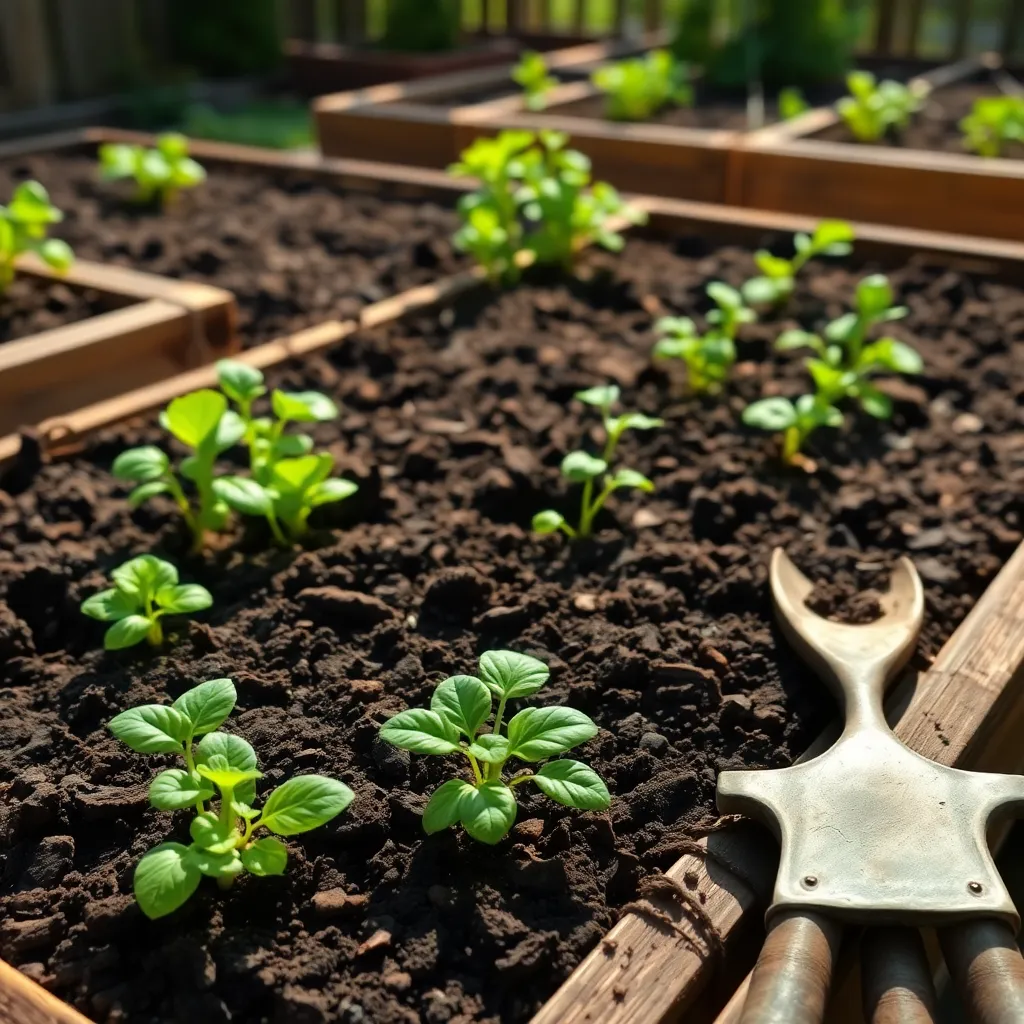
Understanding basic soil needs is crucial for growing healthy vegetables, especially for beginners. The foundation of a thriving vegetable garden starts with soil that is well-aerated and nutrient-rich.
Loamy soil is ideal for most vegetables because it retains moisture while providing excellent drainage. To achieve this, consider mixing equal parts of sand, silt, and clay, and enrich it with organic matter like compost or well-rotted manure.
Regularly checking your soil’s pH level can significantly impact plant health. Most vegetables prefer a slightly acidic to neutral pH of 6.0 to 7.0, so test your soil and amend it with lime to raise the pH or sulfur to lower it as needed.
Ensure your soil maintains a good structure by avoiding compaction. Avoid walking on your garden beds and use mulch to protect the soil surface, which also helps in maintaining consistent moisture levels.
Simple Watering Tips for Newbies
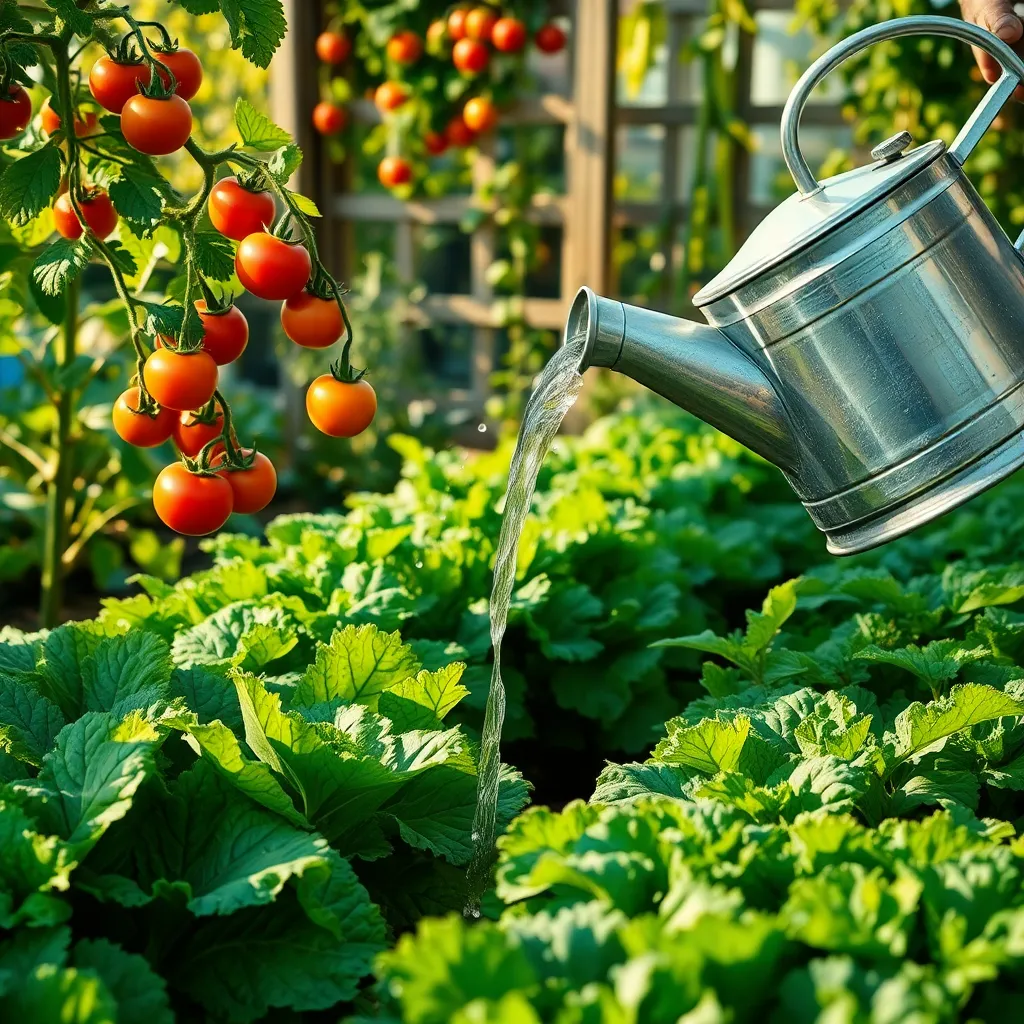
Watering is one of the most crucial aspects of growing healthy vegetables, yet it can often be misunderstood by beginners. It’s essential to recognize that over-watering is just as harmful as under-watering, so finding a balance is key.
Start by understanding the specific water needs of each vegetable you are growing. For instance, leafy greens like lettuce thrive with consistent moisture, while tomatoes prefer a less frequent but deeper watering approach.
To determine when your plants need water, check the soil moisture by sticking your finger about an inch into the soil. If it feels dry at that depth, it’s time to water; if still moist, wait a day or two before rechecking.
Consider using a mulch layer to retain soil moisture and reduce evaporation. Mulching also helps keep roots cool, which is particularly beneficial in warmer climates and during the peak of summer.
For those looking to optimize their watering routine, invest in a soaker hose or drip irrigation system. These methods deliver water directly to the soil, minimizing waste and ensuring that roots receive adequate hydration without wetting the foliage.
Sunlight Requirements for Growth
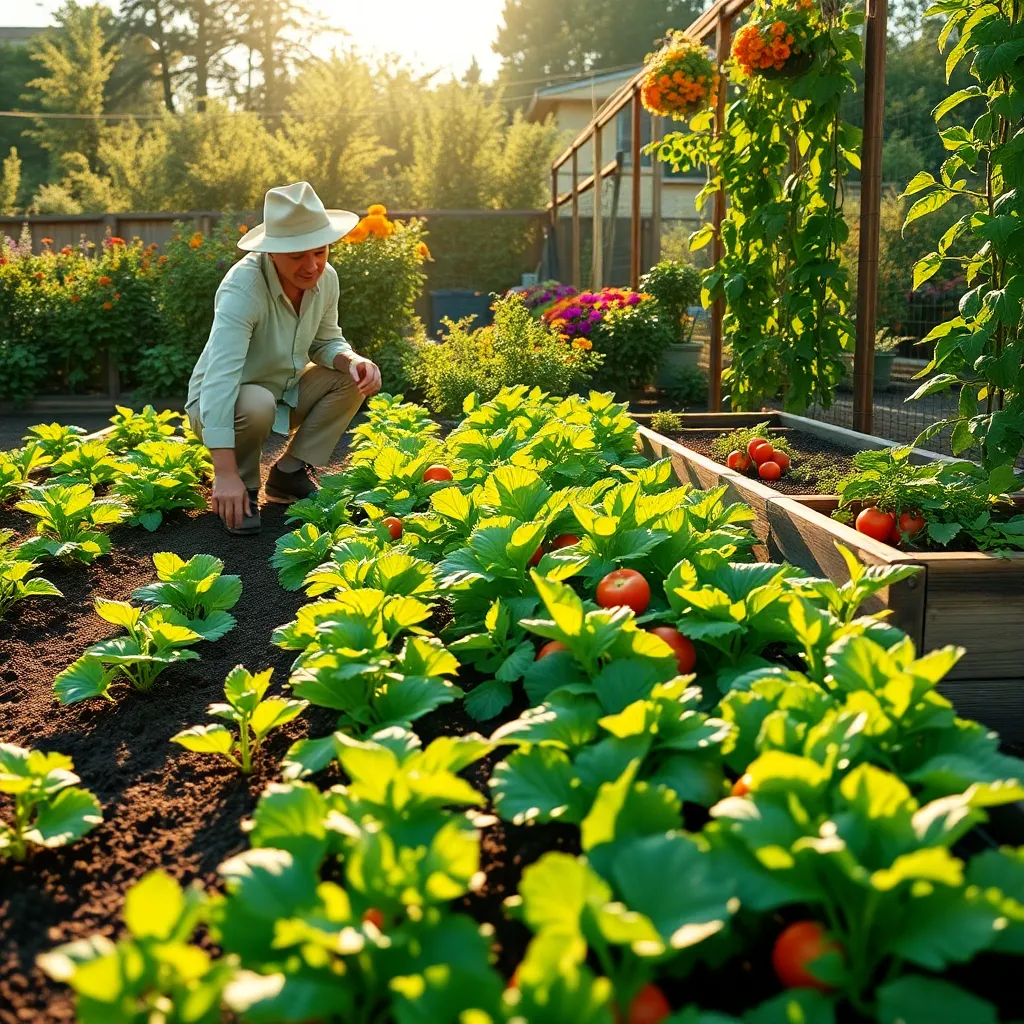
Understanding sunlight requirements is crucial for growing healthy vegetables. Most vegetables thrive in full sun, needing at least six to eight hours of direct sunlight daily to flourish.
One important tip is to observe your garden space throughout the day to identify areas that receive the most sunlight. This will help you plan where to plant vegetables like tomatoes and peppers that are sun-loving varieties.
For those with limited sun exposure, consider growing leafy greens such as lettuce or spinach, as they can tolerate partial shade. These greens can still produce well with only four to six hours of sunlight, making them ideal for shaded garden spots.
Improving sunlight penetration can also benefit your garden. Prune any overhanging branches that might cast shadows and place reflective surfaces nearby to boost the sunlight reaching your plants.
Additionally, using raised beds can help maximize sun exposure by elevating plants above any nearby shade obstacles. Raised beds also improve drainage and soil quality, further enhancing plant growth.
Harvesting Your First Crop
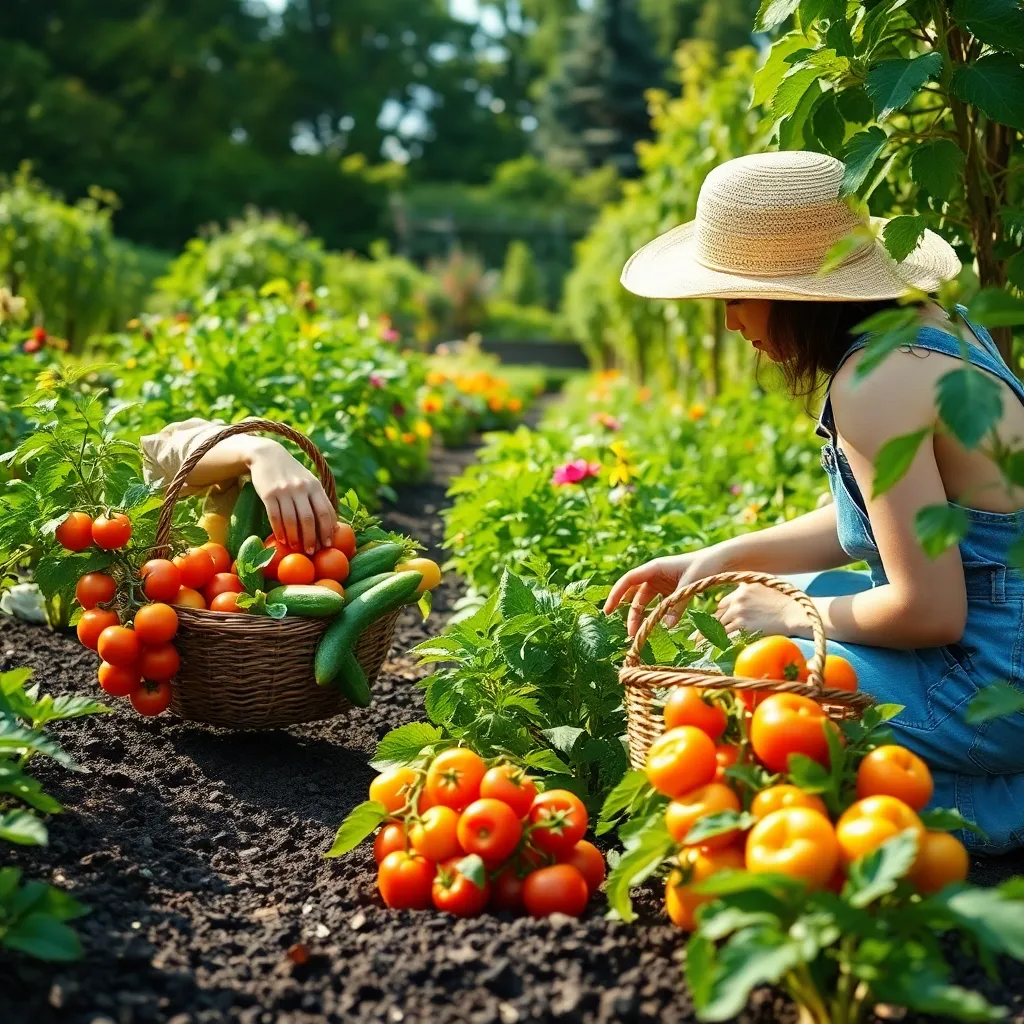
Harvesting your first crop is an exciting milestone in your gardening journey. It is important to know the right time and method to harvest to ensure maximum flavor and nutrition from your vegetables.
For beginners, start by observing the physical cues your plants offer. Leaves should be vibrant, and vegetables like peas or beans should feel firm and full but not overly swollen.
When it comes to root vegetables such as carrots and radishes, gently loosen the soil around the base before pulling them up. Use a garden fork to carefully lift them, ensuring the roots remain intact for better quality.
Watering your plants a day before harvest can make the process easier, especially for root crops. This practice helps the soil become more pliable, reducing the risk of damage to the vegetables during harvest.
For leafy greens, opt for a method called “cut and come again,” which allows multiple harvests from the same plant. Simply use sharp scissors to trim the outer leaves, leaving the inner leaves to continue growing.
Basil, mint, and other herbs can be harvested by pinching off the tops to encourage bushier growth. Regular harvesting not only provides fresh herbs for culinary use but also keeps the plants healthy and productive.
After harvesting, wash your produce gently to remove any soil and let them dry before storage. Proper post-harvest care ensures that your fresh produce stays crisp and ready for use, maximizing the fruits of your labor.
Conclusion: Growing Success with These Plants
In nurturing a relationship, much like tending to a garden, beginning with the basics can lead to a bountiful harvest. This article explored five key concepts for cultivating thriving relationships: understanding each other’s needs, practicing effective communication, fostering trust, nurturing shared interests, and growing together through challenges. These concepts are akin to easy-to-grow vegetables for beginners, offering a foundation for any relationship to flourish.
As an actionable next step, choose one concept to focus on this week. Perhaps start with enhancing communication by setting aside time for open dialogue, or plan an activity that fosters a shared interest. Small, consistent efforts can create immense growth over time.
Remember, every relationship is a unique garden that requires ongoing care and attention. Bookmark this article as a handy guide to revisit these fundamental principles whenever you need a reminder or a nudge in the right direction.
Your commitment to nurturing these concepts today paves the way for a thriving, resilient relationship tomorrow. Embrace this journey with optimism and warmth, knowing that every step you take brings you closer to a more fulfilling connection. Here’s to your relationship success—today, and in the days to come!

